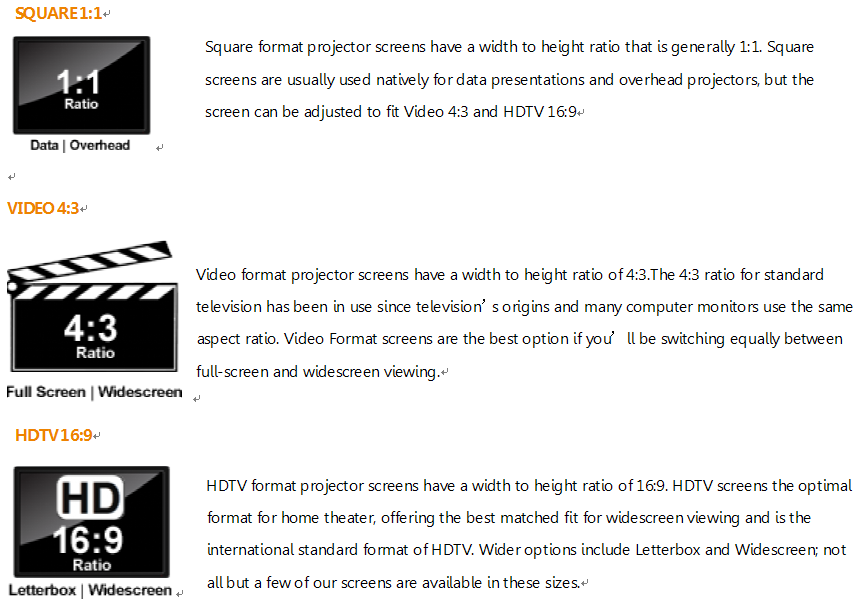Step 3: Alltec Projector Screen Size
ACMERA are sized in a few different standard formats: Square, Video format and HDTV are some of the most popular.

Screen Gain: Screen gain is a relative measure of reflectivity of the projector screen. The number represents a ratio between the measured brightness of a screen coated with a standard matte white material and the screen itself when measured perpendicular to the screen.
For example, if a reference image is projected upon a standard matte white material and the brightness is measured, then the screen material in question would have to measure 110% of the same brightness, while using the exact same image and projector setup, to measure in with a gain of 1.1.
A material that is the same brightness as the reference material would be 1.0. A 1.0 gain screen diffuses light evenly in all directions so seating can be placed at wider viewing angles. Many gray screens reflect less than a standard white material and so it's normal to see gains in the range of 0.6 or so. Lower gain screens are good when you have higher amount of ambient light, but require brighter projectors.
Similarly, some materials provide a gain of 1.5 or higher and usually accomplish this by better focusing the reflection toward the audience. This can lead to a brighter image but usually comes with the tradeoff of having a narrower viewing angle and the risk of hotspots (seeing the direct, bright reflection of the projector bulb). Higher gain screens were more popular years ago when projectors had significant limitations in their brightness, but some high gain screens are still necessary for specific applications, such as 3D Metal screens.
Note: Gain is the measure of reflectivity— Rear Projection Film does not have a gain since the light passes through the material.